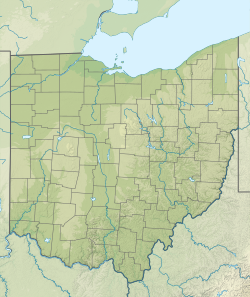2010 census
As of the census [10] of 2010, there were 177 people, 69 households, and 52 families residing in the village. The population density was 842.9 inhabitants per square mile (325.4/km2). There were 74 housing units at an average density of 352.4 per square mile (136.1/km2). The racial makeup of the village was 91.5% White, 1.1% African American, 0.6% Native American, 2.3% Asian, 1.1% from other races, and 3.4% from two or more races. Hispanic or Latino of any race were 2.3% of the population.
There were 69 households, of which 26.1% had children under the age of 18 living with them, 69.6% were married couples living together, 4.3% had a female householder with no husband present, 1.4% had a male householder with no wife present, and 24.6% were non-families. 15.9% of all households were made up of individuals, and 4.3% had someone living alone who was 65 years of age or older. The average household size was 2.57 and the average family size was 2.88.
The median age in the village was 51.6 years. 17.5% of residents were under the age of 18; 5.1% were between the ages of 18 and 24; 18.6% were from 25 to 44; 39.1% were from 45 to 64; and 19.8% were 65 years of age or older. The gender makeup of the village was 48.0% male and 52.0% female.
2000 census
As of the census [3] of 2000, there were 227 people, 79 households, and 69 families residing in the village. The population density was 995.6 inhabitants per square mile (384.4/km2). There were 79 housing units at an average density of 346.5 per square mile (133.8/km2). The racial makeup of the village was 98.68% White, 0.44% Asian, 0.44% from other races, and 0.44% from two or more races. Hispanic or Latino of any race were 1.32% of the population.
There were 79 households, out of which 35.4% had children under the age of 18 living with them, 82.3% were married couples living together, 3.8% had a female householder with no husband present, and 11.4% were non-families. 10.1% of all households were made up of individuals, and 7.6% had someone living alone who was 65 years of age or older. The average household size was 2.87 and the average family size was 3.06.
In the village, the population was spread out, with 25.1% under the age of 18, 5.3% from 18 to 24, 17.2% from 25 to 44, 39.2% from 45 to 64, and 13.2% who were 65 years of age or older. The median age was 46 years. For every 100 females there were 102.7 males. For every 100 females age 18 and over, there were 102.4 males.
The median income for a household in the village was $129,555, and the median income for a family was $137,982. Males had a median income of $68,125 versus $48,854 for females. The per capita income for the village was $47,304. None of the families and 2.8% of the population were living below the poverty line.




